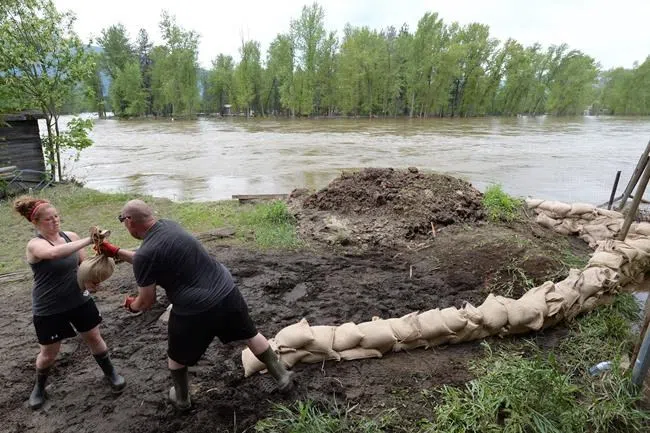
Armed forces arrive in B.C. as federal assistance approved for flooded areas
GRAND FORKS, B.C. — The first wave of 300 Canadian military personnel is being sent to British Columbia to help communities overwhelmed by floodwaters as parts of the province are expected to be hit with heavy rain following snowmelt from unseasonably warm weather.
The Canadian Armed Forces said staff from Joint Task Force Pacific and personnel from the 3rd Canadian Division based in Edmonton were to establish themselves in Vernon on Thursday before being deployed to areas affected by flooding including Grand Forks.
Officials in the southern Interior city say thunderstorms are expected to bring a second round of high water.
Chris Marsh of the Regional District of Kootenay Boundary said while water levels in the Granby, Kettle, and West Kettle rivers ebbed since a flood last week, the Kettle River rose 20 to 22 centimetres on Thursday and all three were dangerously high.


